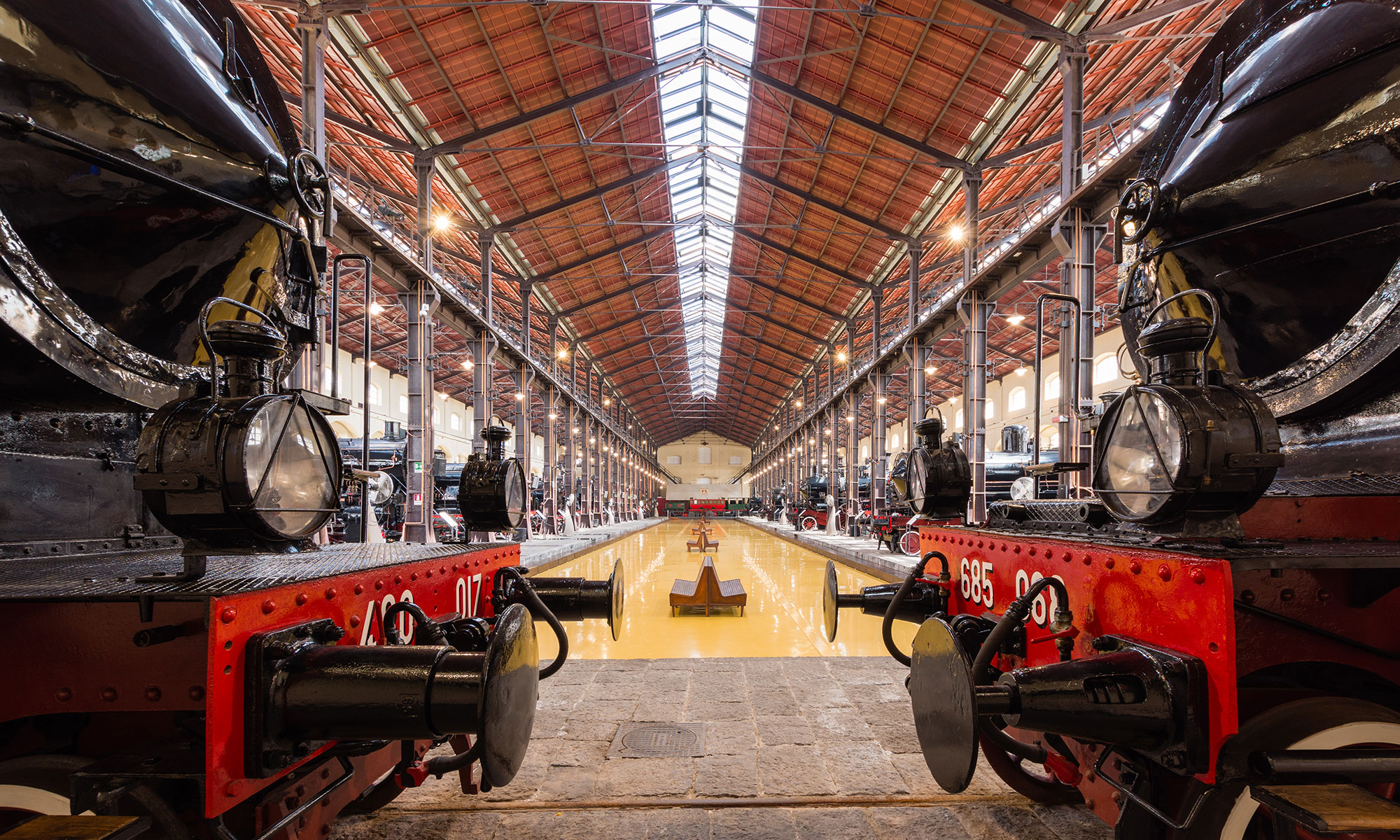Originally it was Pietra Bianca. Then, after the eruption of Vesuvius in 1631 whose materials reached there, the name changed to Pietrarsa.
In that place facing the sea, near the newly formed Portici railway station, overlooking one of the most enchanting views of Naples and its volcano, the Royal Mechanical, Pyrotechnic and Locomotive Factory opened its doors in 1840. The plan of King Ferdinand II of Bourbon, who strongly wanted it as part of the project for the construction of the railway, was to become the spearhead of the industrial system of the kingdom that was building up and that was receiving strong impetus from the innovative discoveries that the century been giving away in Europe. Thus, an innovative factory for the time was built in Portici, very close to the capital. It was also innovative in the structure: large stone sheds with imposing wooden trusses to support the roofs. That, at the beginning, was dedicated to steel production, which within a few years, with the completion of the equipment, was specialized in the production, maintenance and repair of railway equipment. The first plant of its kind in Italy, in the only state of the Peninsula that had a railway line, albeit only seven and a half kilometers long: the Naples-Portici, inaugurated on October 3, 1839.

The new factory used modern technologies, connected to the discovery and production of the steam engine. Locomotives were built there since 1845, such as those assembled on site for the first time in 1845 with pieces coming from England, which was the most avant-garde in that production worldwide. And already in 1853, with all the machinery in full operation, it employed 619 specialized workers and could fully consider itself the first industrial complex in Italy. There, both locomotives and train carriages and freight wagons were built and maintained. But the foundry was also placed at the service of art, when on May 18, 1852 the casting of the gigantic (4.5 meters high) statue of King Ferdinand was brought to a successful conclusion, represented in the act of giving the construction order of the establishment.
With the arrival of the unitary state, the non-positive evaluation of the factory formulated by some technicians sent from the north led to the hypothesis of a real dismantling, in the end averted, but the factory was sold to private individuals who considerably resized it. It was a dramatic period that culminated in 1877 in the harsh and bloody repression of the protests of workers who wanted to defend their jobs. Following those episodes, the management of the factory returned to the State, then in 1905 Portici became a workshop for major repairs and remained so in the first half of the 20th century. The decline began after the last world war, when steam engines were supplanted by diesel and electric engines. This led to the cessation of activity on 20 December 1975 with the last of the over 600,000 repairs carried out.
It was in 1989 that for the 150th anniversary of the Italian Railways the Portici structure was inaugurated again, this time as the National Railway Museum, managed by the State Railways, the most important in Europe for the value and uniqueness of its very special collection.
With the huge statue of Ferdinand of Bourbon in the square in front of the 19th century factory, the museum offers a faithful reproduction of the first locomotive, the Bayard, used for the maiden voyage of the Naples-Portici in 1839. In the seven pavilions extending for more then 14 thousand covered square meters, the industrial archeology’s jewel of Portici’s factory houses, among the numerous parts of historical trains, the carriage 10 of the royal train built by Fiat for the wedding between Umberto II and Maria Josè, various steam locomotives, diesel and electric. Models related to the epoch of the railway and the Guinness model Trecentotreni, 18 meters long and more than two wide, made by a railway worker in fifteen years of work. Visits by illustrious characters are also mentioned, starting with Pope Pius IX to zar Nicholas I. The Art Nouveau reception room with a ceiling decorated with pure gold is not to be missed..
The large open air part of the museum complex is also very prestigious. with an astonishing garden that is part of the Great Italian Gardens and a breathtaking view of the gulf. To be admired is also the "Bayard" café, named after the designer of the railway line who began the intriguing story of the ironroad between Naples and Portici and in Italy.
Useful information:
Hours: Wednesday by reservation only; Thursday and Sunday - 9:30 a.m. to 11 p.m.; Friday and Saturday 9:30 a.m. to midnight
Full ticket: 9€
Reduced ticket: 6€
Copyright video, foto e testi © 2020



Comments powered by CComment